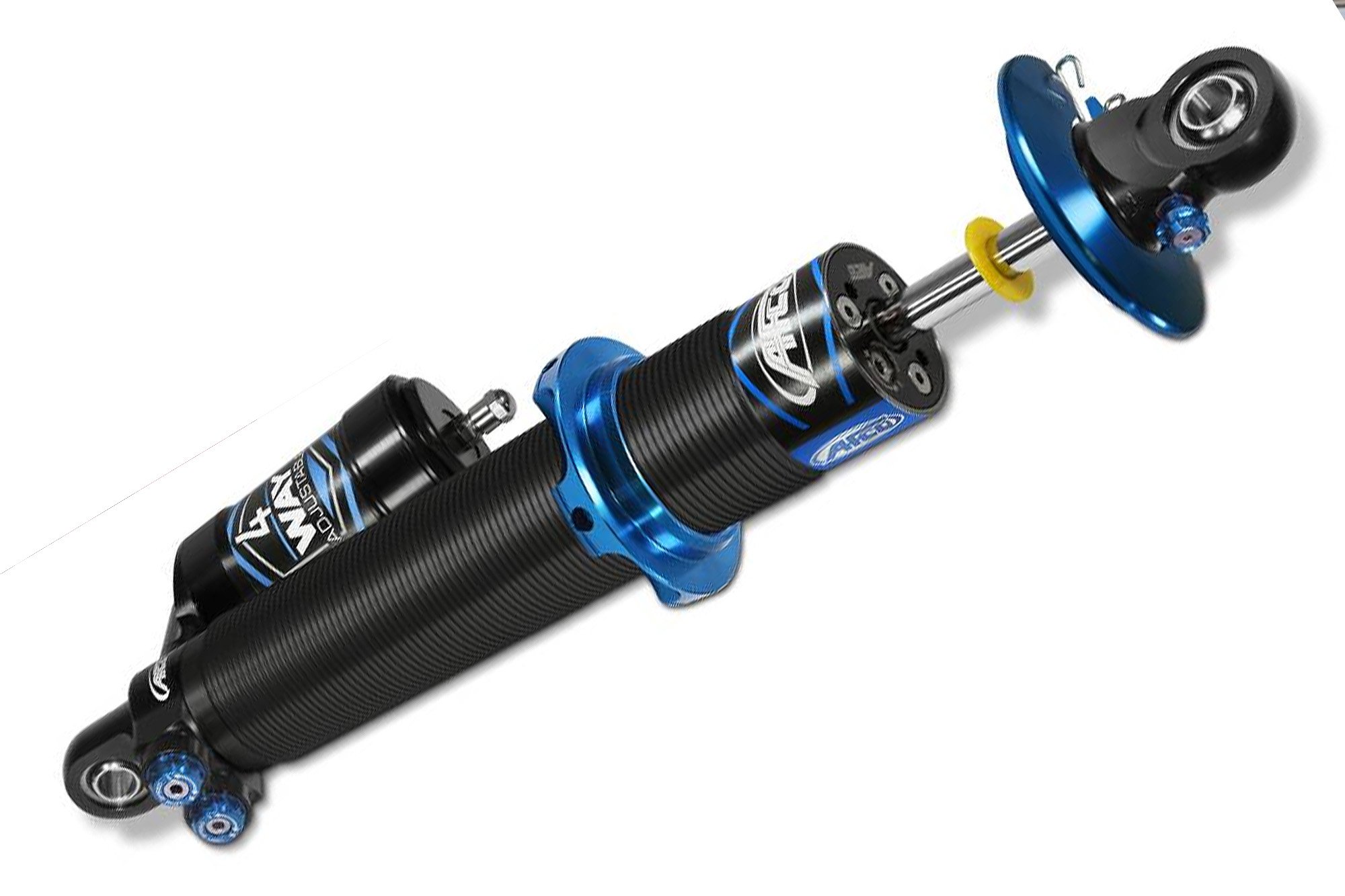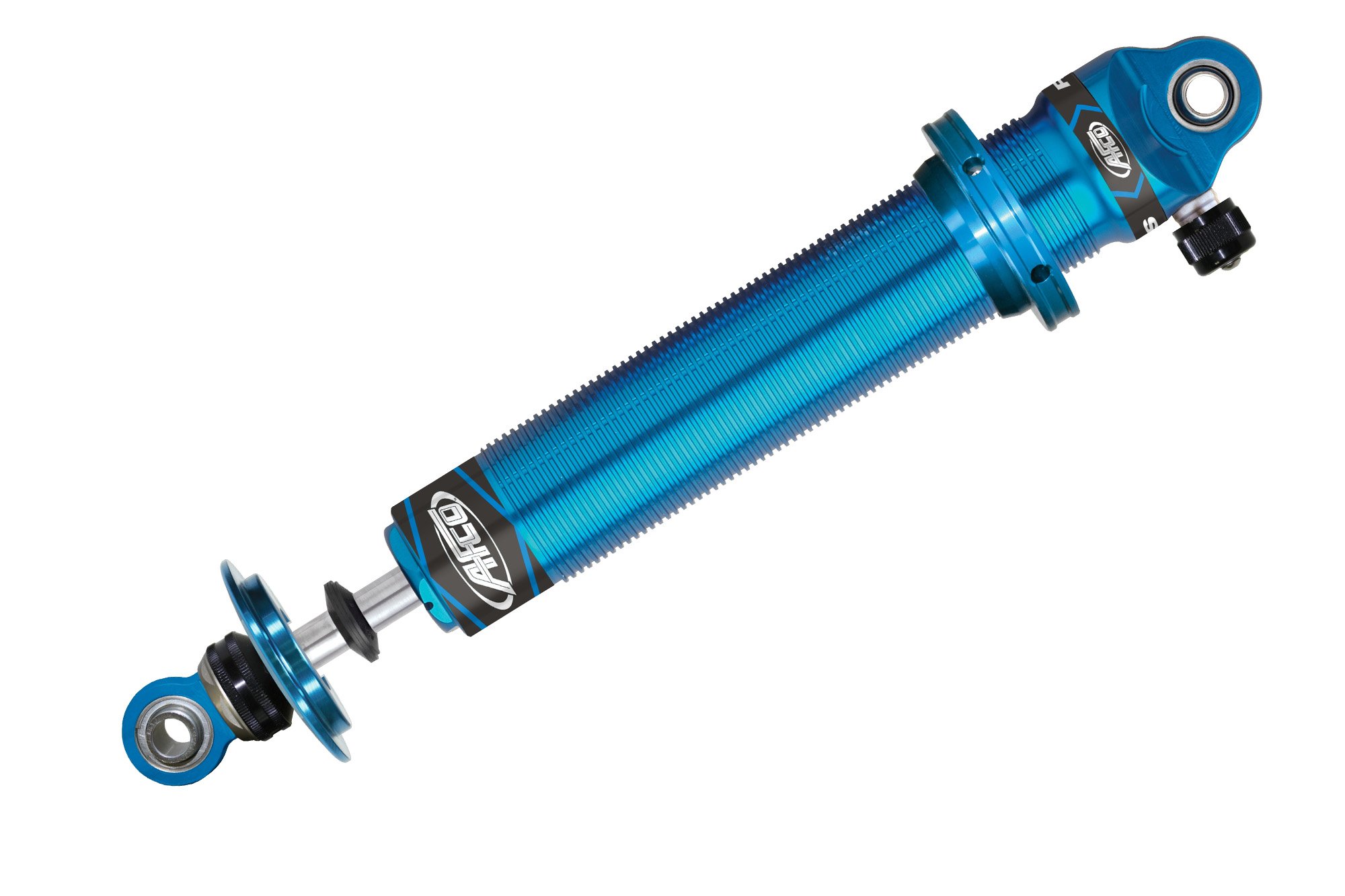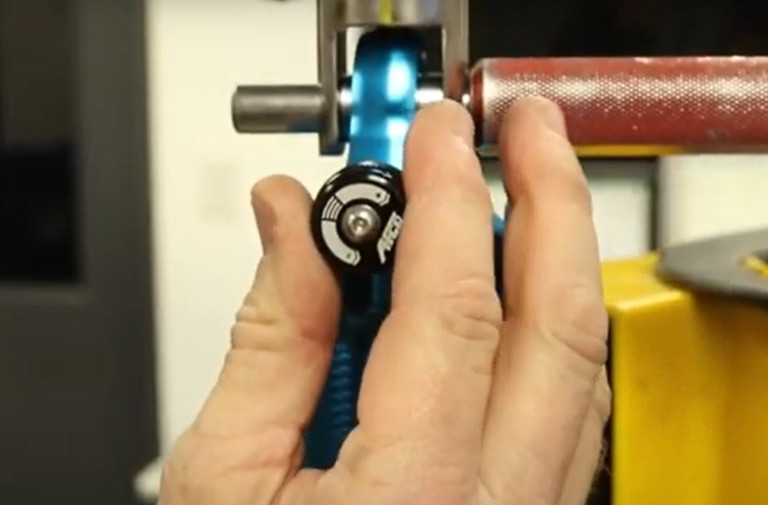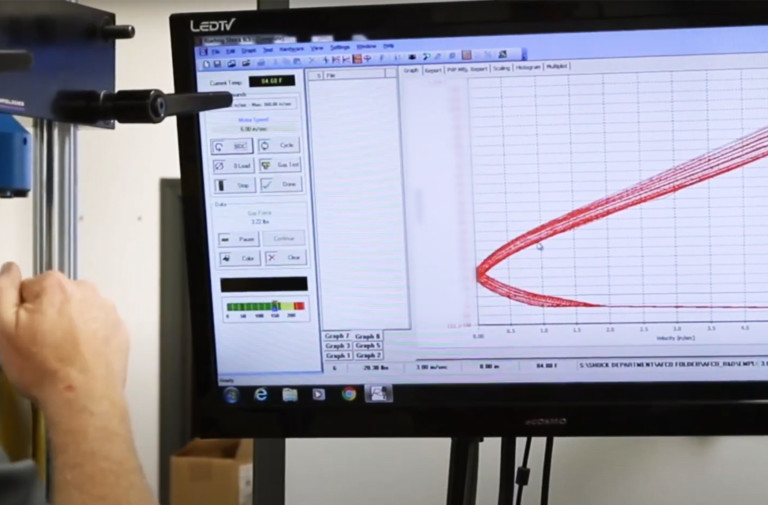Creating proper launch characteristics from the starting line is two-fold. Of course, you want as much weight transfer as possible to plant the rear tires, but you must also control the “return to earth” properly.
AFCO Racing Products developed its new “BNC2” shock absorber valving that continues the shocks’ tradition of smooth landings with an even more aggressive valve package. Bounce control valving improves control issues concerning drag racing’s high population of nose-heavy, wheelstanding door cars competing at the dragstrip.
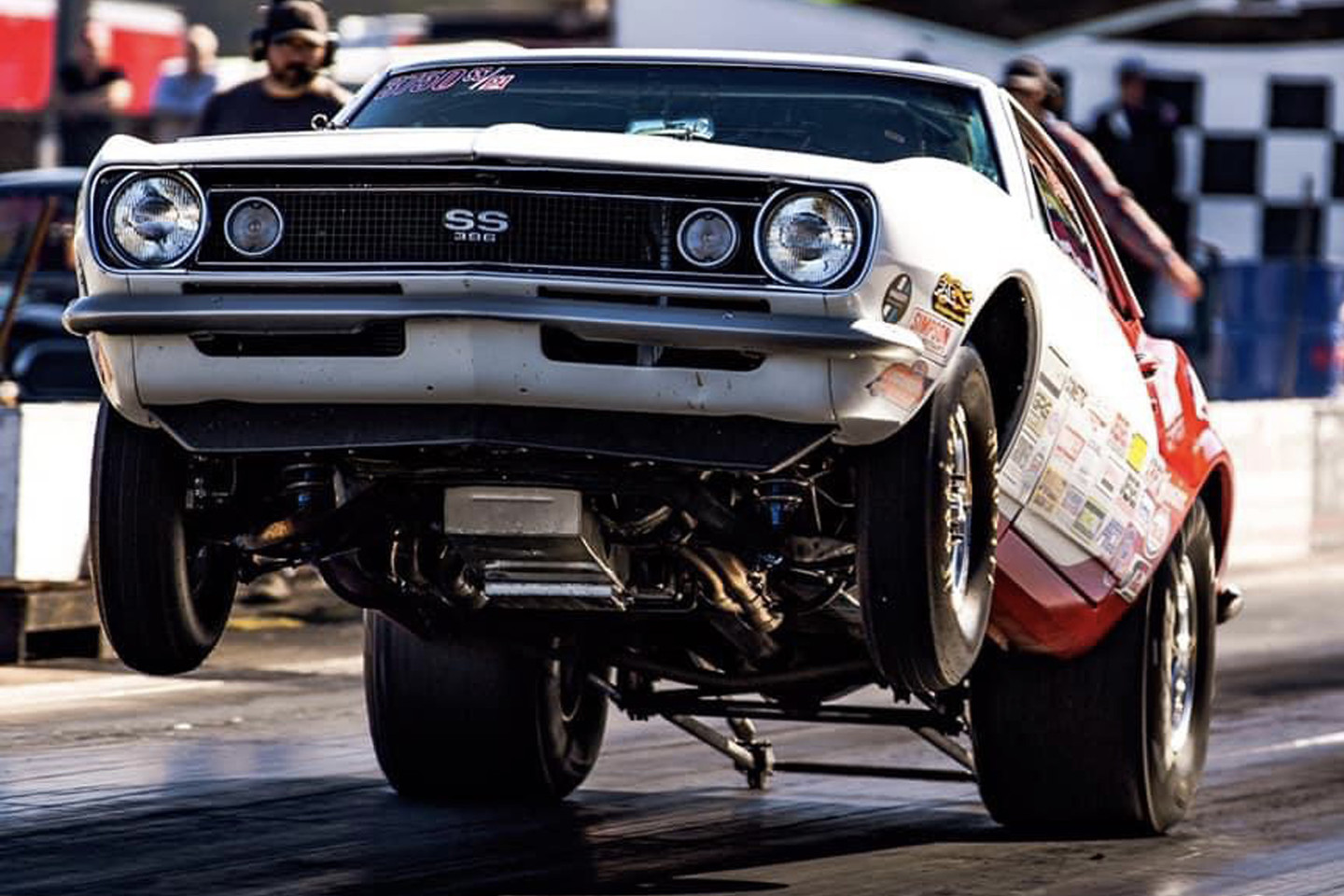
A prime example of the BNC2 shock’s effectiveness is from testing AFCO performed with NHRA Super Stock racer Brian Haag, who is a former U.S. Nationals Super Stock champ with his iron head, big-block Chevy-powered 1968 Camaro.
When the tires from a wheelstand touch down, the energy of that landing transfers immediately to the shocks. The shocks must control that mass without the landing force blowing through the shock; if the shocks cannot evenly and accurately control that force, the suspension bottoms out, and the coil spring releases the compressed energy back upward. This reaction causes many different problems. In many cases, this rebounding can happen multiple times before the front suspension actually settles.
“You have got to control the wheelstand when it lands, says Eric Saffell, National Account Manager at AFCO. “If you have a car that cycles or ‘bounces’ up and down several times upon landing, you’re making the steering camber and toe-in to aggressively cycle and cause the tires to scrub that track surface. This scrubbing effect can easily cost racers up to .04- to .05-second of elapsed time before the 330-foot mark.”
The new BNC2 valving can be added to existing AFCO shocks or installed in newly-ordered front shock models from their Dominator 4-way adjustable drag shocks, coil-over Reactor shock, stock mount monotube front 70 Series shock, and front coil-over conversion kits.
These hard rebounds, combined with tire scrubbing, can increase the difficulty of dialing in an index or handicap race car, plus it can damage the front suspension ball joints and steering rod ends. Many racers can also attest to crushed headers, damaged oil pans, and more from uncontrolled post-wheelstand “slamming” of the front end.
Saffell adds, “It doesn’t get any more specific than that. A heavy front-end car with a lot of torque needs to get that weight transferred to the rear tires at launch by getting that front end into the air. We can now control those landings and stop the constant moving of the front-to-rear weight transfer with every bounce. The bottom line is that you can stop sacrificing your car to uncontrolled wheelstand landings to get that needed weight transfer off the starting line.”
Many racers have watched video recordings of their cat at launch and observed the rear slicks loading and unloading before the 60-foot mark. The cycling of front-to-rear weight transfer is typically the culprit.
In most cases, where your shocks are located inward from the wheel/tire, the shock has a motion ratio working against the shock. The definition of motion ratio means that the shock travels with less motion than the actual suspension travel.
“Now you’ve got some problems to overcome with an inboard mounted shock moving at a slower rate than the tire is going to see,” says Saffell. “This BNC2 shock valving is speed sensitive, which means that the faster you move them, the quicker the shocks can stiffen. Also, to achieve the perfect compression dampening rate, the BNC2 valving has 24 clicks of compression adjustment, which is a very broad range of adjustment.
The new valving option from AFCO a total of 24 "clicks" of adjustment for compression and rebound setting; each adjustment shows a visible change in the characteristics of the shock on AFCO's computer controlled shock dyno system
The engineers at AFCO have been working to precisely control the landings from wheelies for about 15 years. This new BNC2 valving package is the ultimate revision of their work. This valving package is available for double-adjustable shocks already in the field, or new order shocks — of any configuration from coil-over to OEM-located racing shocks.
The adage “what goes up, must come down” is one that the AFCO has been focused on and mastering with front drag racing shocks for some time. Saffell says in closing, “Our ultimate goal is to ‘stick the landing’ where the driver can easily settle from a wheelstand and get his bearing between his car, his competitor, and make decisions to help them with the race.”

